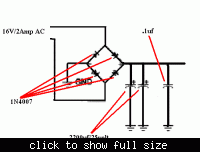ALERTLINKS
Advanced Member level 4
200 pcs of IN4007 are available in our local market for 1$.
Follow along with the video below to see how to install our site as a web app on your home screen.
Note: This feature may not be available in some browsers.
If it is for same or similar performance then why not.literally watch their pennies
you don't have to bother about cost for prototyping or assembling one unit for your hobby
There's nothing wrong with using the cheapest parts that do the job. But it's also a waste of your time if it's for prototyping / one-offs only, and the cost difference is something you would earn (in a regular job) in much less time than you'd spend on using the lower-cost parts vs. more convenient ones.I am myself in this habit of replacing parts that cost less. I am easily carried away with a price offer of a very small difference. I even delay my project, if i know i'll get that part for less. It is more like an obsession, i am now trying to overcome, That's why i say,you don't have to bother about cost for prototyping or assembling one unit for your hobby
i have a 16v 2 amp transformer, i make a bridge with 1N4007 and after the bridge two 2200uf/25volt and a .1uf disc type capacitor is paralleled. now when i switched on, two of my diodes is burned... can anyone help me to rectify this problem. i am a newbie to electronics. thanks in advance. here is my schematic:

There's nothing wrong with your circuit. Maybe you made a mistake in your actual wiring. Double-check the polarities of the diodes and the two 2200/25 capacitors.